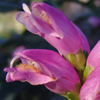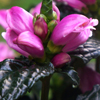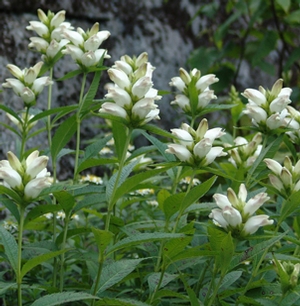
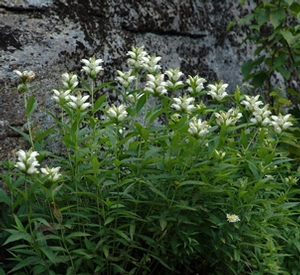
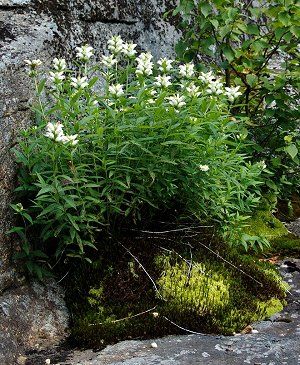



Plant Calculator
Enter the approximate length and width of the area you will be planting and click 'Calculate' to determine how many Chelone glabra you will need.
Correct and successful spacing is complex and depends on project conditions. We encourage you to call us at 877-ECO-PLUG for project specific recommendations and further assistance.
Chelone glabra
turtlehead
- Category: Perennial, Native
- Hardiness Zone: 4-8
- Height: 2-4 Feet
- Spread: 1-3 Feet
- Spacing: 18 Inches
- Bloom Color: White
Spikes of elegant white flowers top shiny green foliage in late summer and early fall. Grows best in moist meadows, stream banks, and swamps. Favorite breeding site for the Baltimore Checkerspot Butterfly.
Click here to download technical information for growers:
Exposure
| • | Part Sun |
Wetland Indicator Status
| • | Obligate Wetland (OBL) |
Propagation Type
| • | Open pollinated |
Additional Information about Chelone glabra
Chelone glabra, or turtlehead, has spikes of elegant white flowers atop shiny green foliage in late summer to early fall. The flowers can possess a touch of pink and resemble snapdragon flowers. In optimum conditions, the plants grow 3-4 feet tall and are an excellent specimen plant in rain gardens and along a water edge. It is called turtlehead because the flower shape resembles a turtle’s head.
Native to the eastern United States into eastern Canada, turtlehead grows in open woodlands in floodplain areas, sedge meadows, fens, and marshes. It prefers full or partial sun in wet to moist soil conditions with fertile soil containing organic matter. It can tolerate periodic flooding and can do well in a garden if watered during dry spells. In shady areas, plant may stretch. To maintain a good height, Chelone glabra can be pinched or staked in spring or early summer.
Chelone glabra is a welcome plant in our rain gardens and along our pond edge, adding a stately vertical element to a naturalistic design. It is a favorite breeding site for the Baltimore Checkerspot butterfly and is well-loved by nectar seeking bumblebees. While the foliage is a feast for some sawflies and other Lepidoptera caterpillars, it is avoided by deer and other mammals due to its bitter taste.
Growing & Maintenance Tips for Chelone glabra
Best grown in moist to wet, rich, humusy soils in part shade. Appreciates a good composted leaf mulch, particularly in sunny areas. Consider pinching back the stem ends in spring to reduce mature plant height, especially if growing plants in strongly shaded areas where they are more likely to need some support. In optimum environments, however, staking is usually not required.

